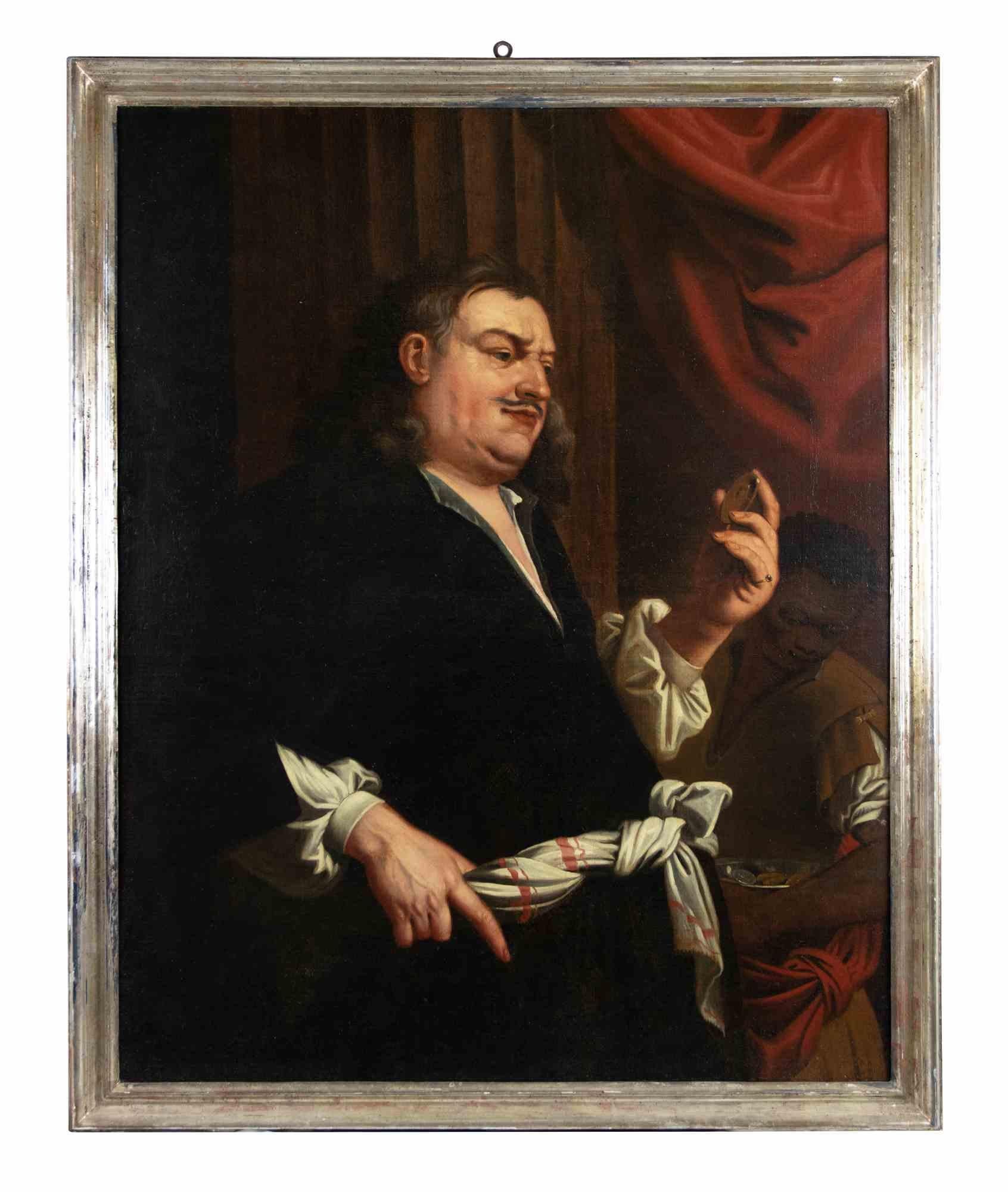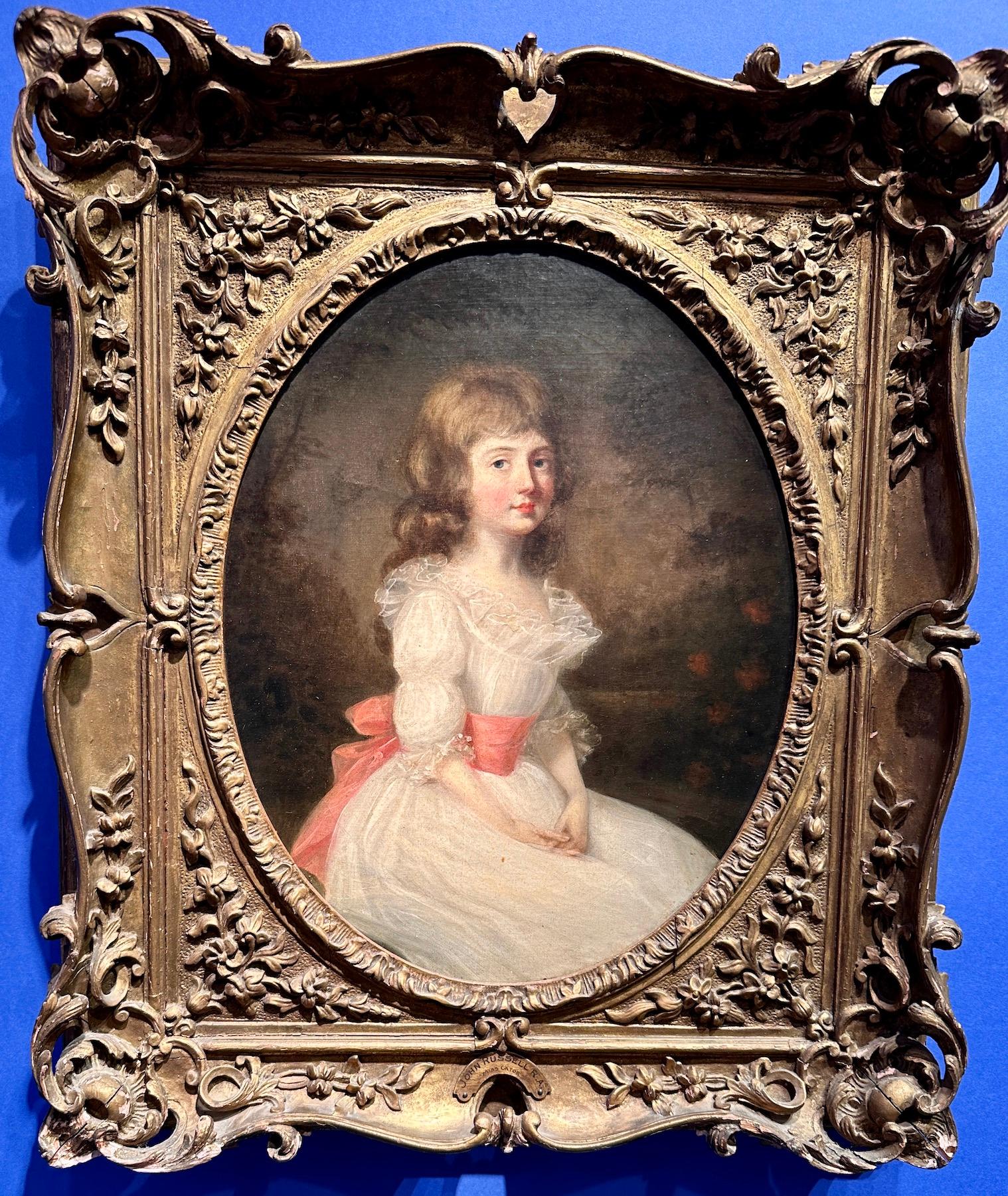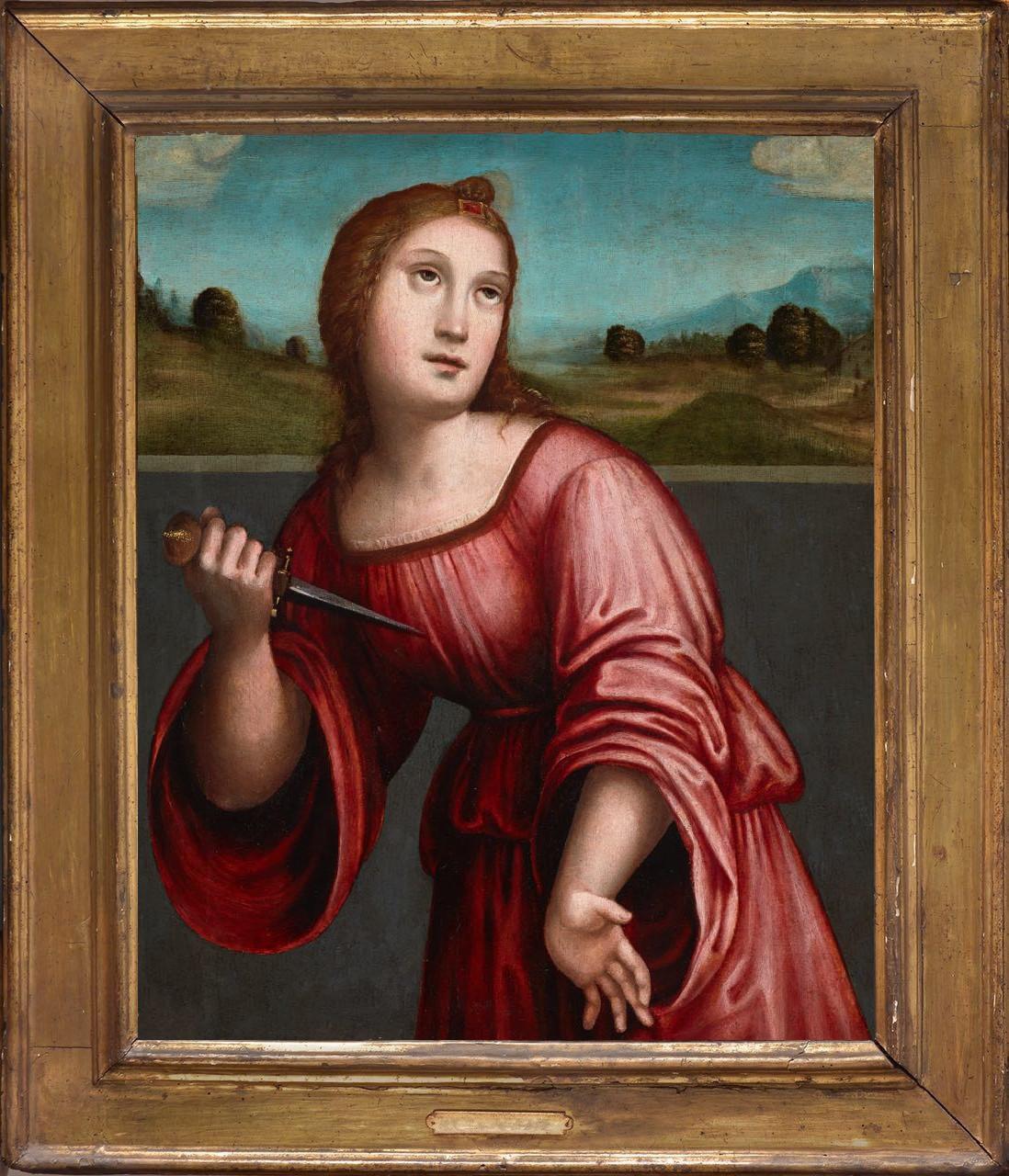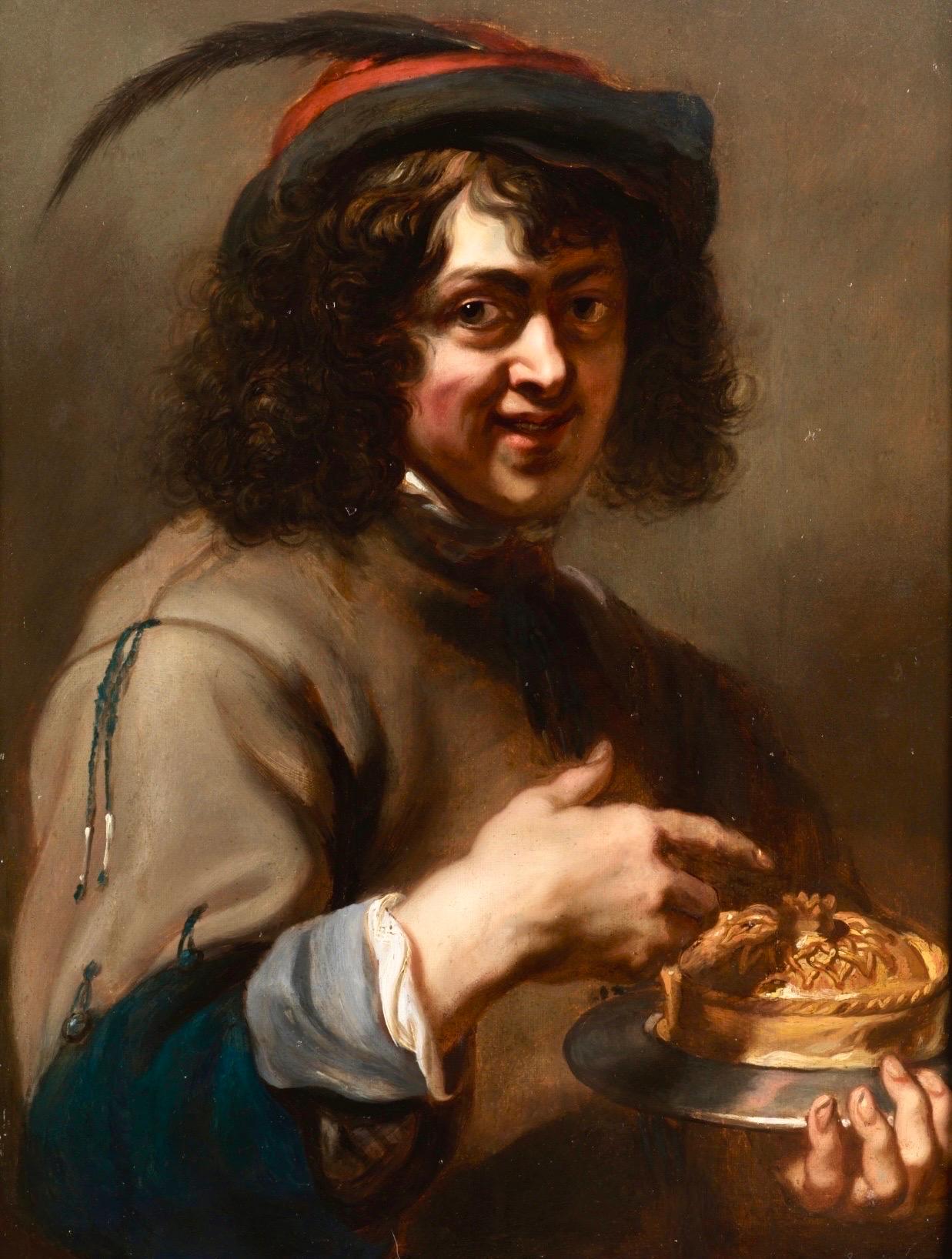Items Similar to After "Pylades and Orestes Brought as Victims Before Iphigenia" History Painting
Want more images or videos?
Request additional images or videos from the seller
1 of 10
(After) Benjamin WestAfter "Pylades and Orestes Brought as Victims Before Iphigenia" History PaintingLate 19th Century
Late 19th Century
About the Item
History Painting of the Greek story. The work was first painted in 1766 by Benjamin West. The original masterpiece is located in the Tate.
According to Sir George Beaumont (1753–1827), who presented the present picture to the National Gallery in 1826, the young American artist, Benjamin West, painted Pylades and Orestes 'immediately on his arrival in England', presumably in 1763, when he arrived from Italy (National Gallery, p.56). It was first shown at the annual exhibition of the Society of Artists, London, in 1766, with its companion 'The Continence of Scipio.' West’s narrative is taken from the third act of a play by the classical author Euripides (480–406 BC) entitled Iphigenia in Tauris. In the passage depicted by West, Iphigenia, a priestess of Diana, stands in judgement before the semi-naked figures of her brother Orestes (in the red drapery) and his cousin and companion, Pylades, who are brought before her, bound, by the shepherd (centre) who had previously reported their capture. Before Iphigenia, and separating her from the two men, is a low altar upon which the two men are to be sacrificed for their act of sacrilege. Beyond, at the entrance of the temple, is the gold statue of Diana that Orestes had been commanded by the oracle at Delphi to take back to Athens in reparation for the murder of his mother Clytemnestra, and which he had been attempting to seize when arrested.
- Creator:(After) Benjamin West (1738 - 1820, American)
- Creation Year:Late 19th Century
- Dimensions:Height: 59 in (149.86 cm)Width: 49 in (124.46 cm)Depth: 3.5 in (8.89 cm)
- Medium:
- Movement & Style:
- Period:
- Condition:Wear is consistent with age.
- Gallery Location:Houston, TX
- Reference Number:

About the Seller
5.0
Vetted Seller
These experienced sellers undergo a comprehensive evaluation by our team of in-house experts.
Established in 1969
1stDibs seller since 2014
785 sales on 1stDibs
Typical response time: 5 hours
- ShippingRetrieving quote...Ships From: Houston, TX
- Return PolicyA return for this item may be initiated within 7 days of delivery.
More From This SellerView All
- Figurative Yellow and Blue-Toned Realistic Impressionist Portrait of a BoyLocated in Houston, TXYellow and blue-toned abstract impressionist portrait of a boy by Danish artist Hans Christian Bärenholdt. Signed by the artist at the bottom right. Hung in a gold carved frame. Dim...Category
1940s Naturalistic Portrait Paintings
MaterialsCanvas, Oil
- Naturalistic Cowboy Portrait of Jim Derrick Roidosa Downs Carlsbad, New MexicoLocated in Houston, TXNaturalistic portrait of Jim Derrick by the artist Lou Benesch. The portrait features a central figure clad in a cowboy hat, nice work shirt, and a gold bracelet leaning against a po...Category
20th Century Naturalistic Portrait Paintings
MaterialsOil, Canvas
- Figurative Neutral-Toned Realistic Impressionist Portrait of a Man in a SuitLocated in Houston, TXNeutral toned abstract impressionist portrait of a man wearing a suit by Danish artist Hans Christian Bärenholdt. Signed and dated by the artist at the bottom right. Currently hung i...Category
1940s Naturalistic Portrait Paintings
MaterialsCanvas, Oil
- "2001 Kabal" Contemporary Neon Pop Culture Painting of Mr. Peanut Against GreenLocated in Houston, TXContemporary pop culture inspired painting by Texas born artist Clark Fox. The work features Mr. Peanut set against a thick background of neon green and pink...Category
2010s Contemporary Portrait Paintings
MaterialsCanvas, Oil
- "Mr. Peanut , George, and Double Native" Contemporary Pop Culture PaintingLocated in Houston, TXContemporary pop culture inspired painting by Texas born artist Clark Fox. The work features a screen print inspired portrait of George Washington, Mr. Peanut, and a dual portrait of...Category
Early 2000s Contemporary Portrait Paintings
MaterialsOil, Canvas
- "Gigantic George" Modern Blue Toned Pointillist Figurative President PortraitLocated in Houston, TXModern blue toned portrait of George Washington by Texas born artist Clark Fox. The work features an intricate depiction of the former president using pointi...Category
1980s Modern Portrait Paintings
MaterialsCanvas, Oil
You May Also Like
- Fine 17th Century Italian Old Master Oval Portrait of Lady on Copper Wooden FrmLocated in Cirencester, GloucestershirePortrait of a Lady (female saint?) Italian School, 17th century oil on copper, framed frame: 9 x 8 inches board: 5 x 4 inches provenance: private collection condition: very good and ...Category
17th Century Old Masters Figurative Paintings
MaterialsOil
- A Rich Merchant - Painting by Unknown - 18th CenturyLocated in Roma, ITA rich merchant is an original old master artwork realized in the 18th Century. Mixed colored oil painting on canvas depicting a merchant looking at a coin in his left hand. Provena...Category
18th Century Old Masters Figurative Paintings
MaterialsOil
- 18th century Portrait of a young girl, Miss Cator in a landscape, white dressBy John RussellLocated in Woodbury, CTPortrait of a young British Girl, in her white dress with Pink Sash. Choosing to acquire an 18th-century portrait of a young girl by English artist John Russell is an opportunity to...Category
1780s Old Masters Portrait Paintings
MaterialsCanvas, Oil
- Lucretia, by Giacomo Raibolini Francia. Detto il Francia. Oil on panel, framedLocated in Brooklyn, NYGiacomo used to paint with his brother Giulio, identifying their works with the monogram «I I». The strong influence of his father, Francesco, is undeniable in all his works, althoug...Category
16th Century Old Masters Figurative Paintings
MaterialsOil, Wood Panel
- 17th century Flemish Old Master - A young boy enjoying a pie, allegory of tasteLocated in Antwerp, BE17th century Flemish old master painting, Allegory of taste The very fine painting depicts a young boy, cheekily tasting a delicious pie. He's looking at the viewer with eyes twinkl...Category
17th Century Old Masters Figurative Paintings
MaterialsCanvas, Oil
- Portrait of Jean-Baptiste Greuze, painted on linen by his daughter Anna GreuzeLocated in PARIS, FRThis replica of the last self-portrait of Jean-Baptiste Greuze painted in 1804, executed by his daughter Anna at her father's side and recently rediscovered, provides us with a poignant image of the great artist, represented with panache despite the disillusions of life. 1. Jean-Baptiste Greuze Jean-Baptiste Greuze was the sixth child of a roofer from Tournus and retained a certain rusticity in his behaviour from his provincial childhood, beyond his taste for describing picturesque scenes of the countryside. He initially started training with a little-known painter from Lyon, Charles Grandon, before his genius was recognised in Paris where he became a full-time student of the Académie (of Painting) in 1755. He exhibited his work for the first time at the Salon during the summer of 1755, before leaving on a trip to Italy in the company of Louis Gougenot, abbot of Chezal-Benoît. Upon his return to Paris, Greuze became a prolific painter, participating widely in the Salons held between 1759 and 1765, to which he sent no less than 63 paintings: numerous genre scenes (The Marriage Contract, The Beloved Mother), but also portraits of his family circle, of courtiers and art lovers, or of his colleagues. The Academy closed the doors of the Salons to him in 1767 for not having produced his reception piece within six months of his reception, as was the tradition. He worked actively on this painting (Emperor Severus rebukes Caracalla, his son, for trying to assassinate him ) until the summer of 1769, tackling historical and mythological subjects for the first time. Once this was completed, he was then fully admitted to the Academy, but as a genre painter, and not as an historical painter, which had been one of the greatest humiliations of his life. Greuze then refused any participation in events organised by the Academy or its successor, the Academy of Fine Arts until 1800. Abandoning history painting, he gave a new twist to genre scenes, bringing them closer to history painting, as in this pair of canvases which constitutes some of his masterpieces: The Paternal Curse: The Ungrateful Son and The Paternal Curse: The Punished Son . Married in 1759 to Anne-Gabrielle Babuti, the daughter of a Parisian bookseller, his marriage was unhappy and his wife probably frequently unfaithful. The institution of divorce enabled him to record their separation in 1793, keeping his two daughters Anna-Geneviève, born in April 1762, and Louise-Gabrielle, born in May 1764, with him. Little is known about his daughter Anna except that she was herself a painter and lived with her father until his death. It is likely that most of the paintings she produced up to that date were attributed to her father, whose technique she shared to a great extent, making it extremely difficult to establish an autonomous corpus of her paintings. Greuze died in his studio at the Louvre on March 21st 1805. The attention paid to the expressivity of his characters and the emotional charge they convey enabled Jean-Baptiste Greuze to enjoy immense popularity with the eighteenth-century public, and they still constitute Greuze's true modernity. As the artist said, "I dipped my brush in my heart". Greuze was also an exceptional draughtsman and a portraitist of immense talent and exceptional longevity who painted both the Dauphin (the son of Louis XV and father to Louis XVI) and the young Napoleon Bonaparte. 2. Greuze's self-portraits Greuze was very much influenced by Dutch paintings during all his life. While the source of his inspiration for genre scenes can be found in Gerard Dou...Category
Early 1800s Old Masters Portrait Paintings
MaterialsLinen, Oil
Recently Viewed
View AllMore Ways To Browse
Art As Antique
Two Older Men
Antique Greek Painting
Old Master Picture
19th Century Greece Painting
Black Gold Statue
Brothers Statue
Naked Men
Diana England
Antique Italy Statues Gold
Black Greek Statue
Naked Statue
Oracle Oil Painting
Low Altar
Altar Statue
George Beaumont
The Continence Of Scipio
Peter Max Original Art





